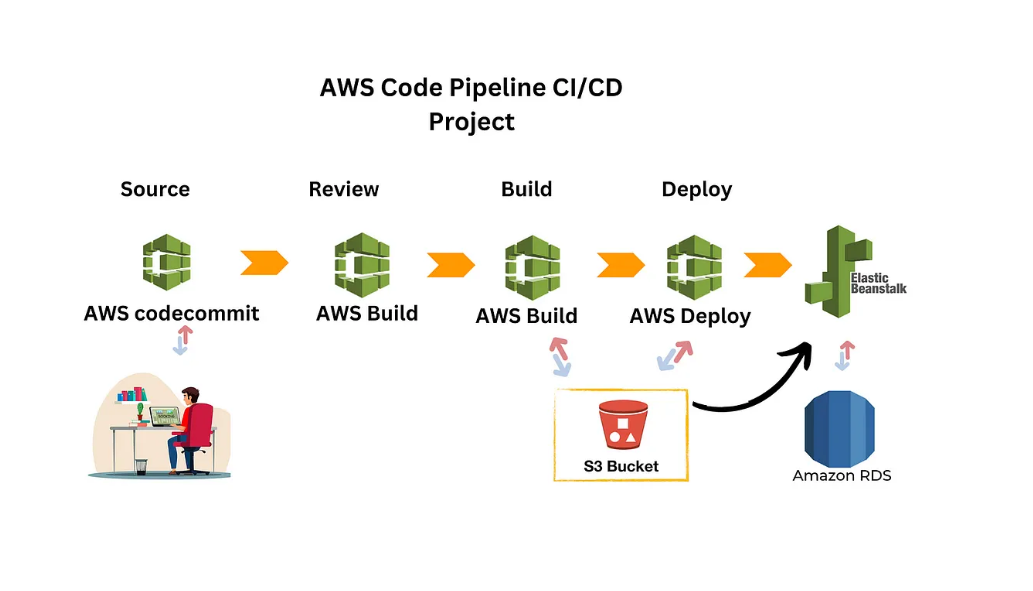
21 Aug 2025
AWS DevOps Trends: Building Serverless CI/CD Pipelines in 2025
In 2025, AWS DevOps is evolving rapidly with the rise of serverless CI/CD pipelines, enabling businesses to build, test, and deploy applications faster than ever before. By leveraging AWS services like CodePipeline, Lambda, and CodeBuild, organizations can automate software delivery without managing servers, reducing costs and boosting scalability.
In the evolving landscape of cloud computing, serverless technologies are redefining how organizations approach DevOps, especially in the realm of CI/CD (Continuous Integration and Continuous Deployment). As more companies shift toward agile, scalable, and cost-efficient development practices, serverless CI/CD pipelines on AWS are becoming a core trend to watch in 2025.
Why Serverless for CI/CD?
Traditional CI/CD pipelines often require maintaining servers or containerized infrastructure. Serverless, on the other hand, eliminates the need to manage infrastructure, reducing overhead while improving scalability and cost efficiency. AWS provides several serverless services—such as AWS Lambda, Step Functions, CodePipeline, and CodeBuild—that enable organizations to automate deployments and integrations without worrying about provisioning servers.
Key AWS Services for Serverless CI/CD
AWS CodePipeline – Automates the entire release process, orchestrating build, test, and deployment stages.
AWS CodeBuild – A fully managed build service that compiles code, runs tests, and produces software packages.
AWS Lambda – Powers serverless functions to trigger workflows, process events, or perform custom automation tasks.
Amazon API Gateway & Step Functions – Help in creating workflows, integrating microservices, and managing complex deployments seamlessly.
Amazon S3 & DynamoDB – Provide storage and state management without requiring servers.
Benefits of Serverless CI/CD Pipelines on AWS
Scalability: Pipelines scale automatically with workloads.
Cost Efficiency: Pay only for the compute and storage used.
Agility: Faster development cycles with reduced operational overhead.
Reliability: Built-in fault tolerance and high availability.
Best Practices for Serverless CI/CD in 2025
Infrastructure as Code (IaC): Use AWS CloudFormation or CDK for reproducible and version-controlled deployments.
Automated Testing: Incorporate unit, integration, and security tests into the pipeline for higher quality releases.
Monitoring & Logging: Utilize Amazon CloudWatch and X-Ray for observability across pipelines.
Security by Design: Apply AWS IAM policies with the principle of least privilege.
Hybrid Pipelines: Combine serverless workflows with containerized solutions (ECS, EKS) for more complex use cases.
Future Outlook: Serverless + AI in DevOps
In 2025 and beyond, AWS is likely to integrate more AI-driven features into DevOps. Intelligent build optimization, anomaly detection in deployments, and automated rollbacks using AI/ML models will make serverless CI/CD pipelines smarter and more resilient.
Conclusion
Serverless CI/CD pipelines on AWS are no longer just an innovation—they are quickly becoming the standard for modern DevOps teams. By leveraging AWS serverless services, organizations can achieve faster, more reliable, and cost-effective software delivery pipelines. As serverless technology matures, integrating AI and hybrid cloud strategies will further enhance CI/CD automation, positioning AWS at the forefront of DevOps evolution.
Visit: https://www.cokonet.com/
Contact: +91 8075400500

